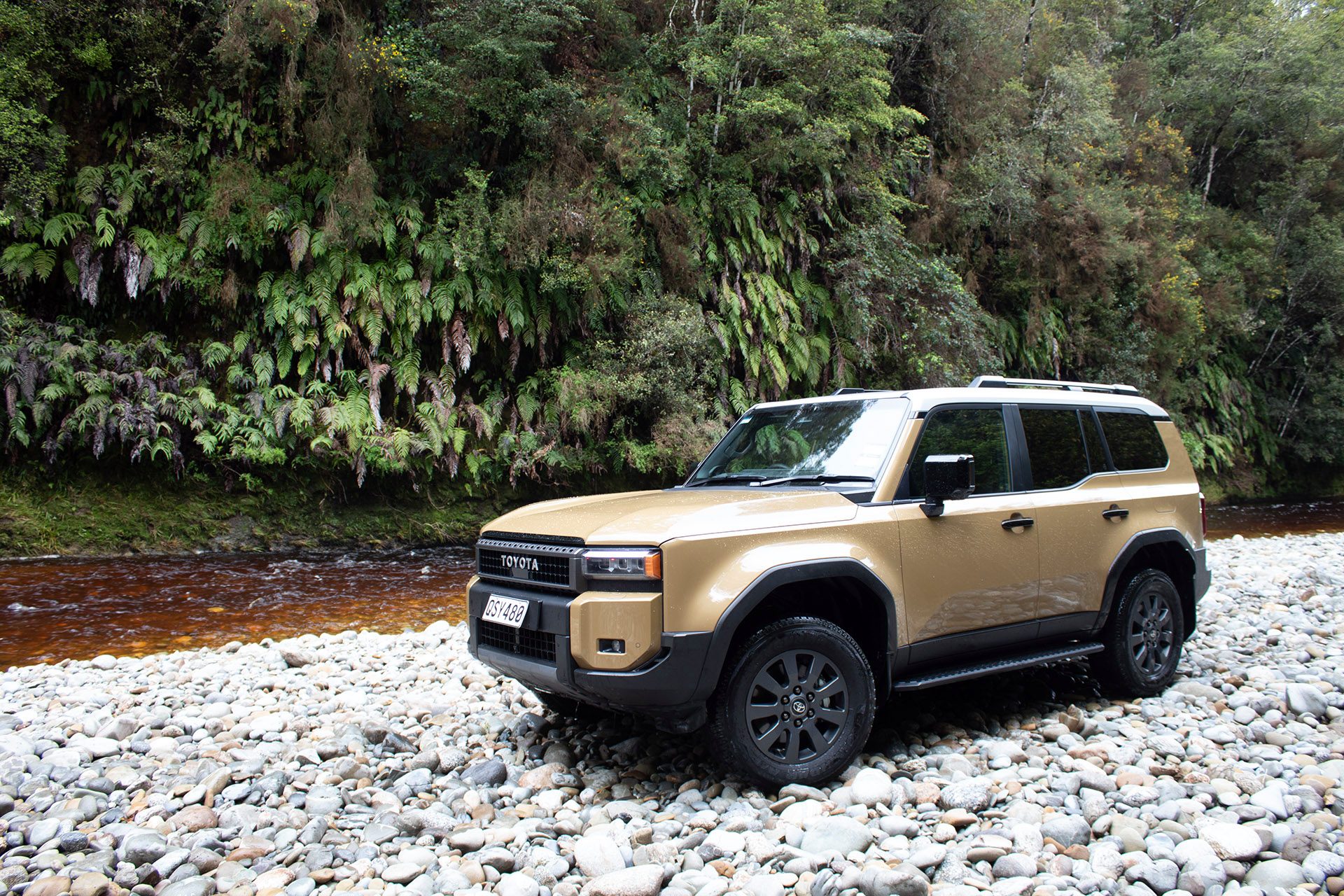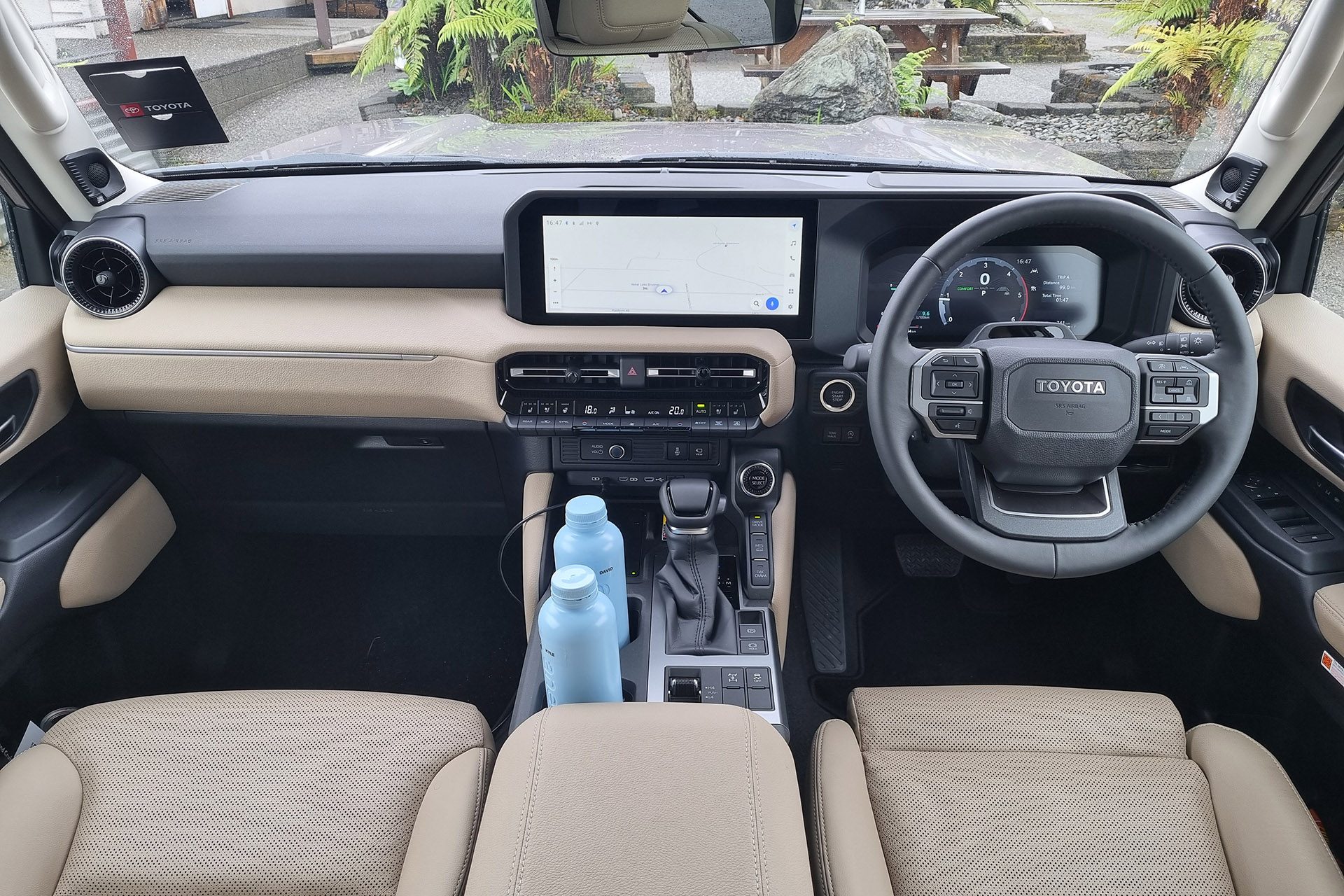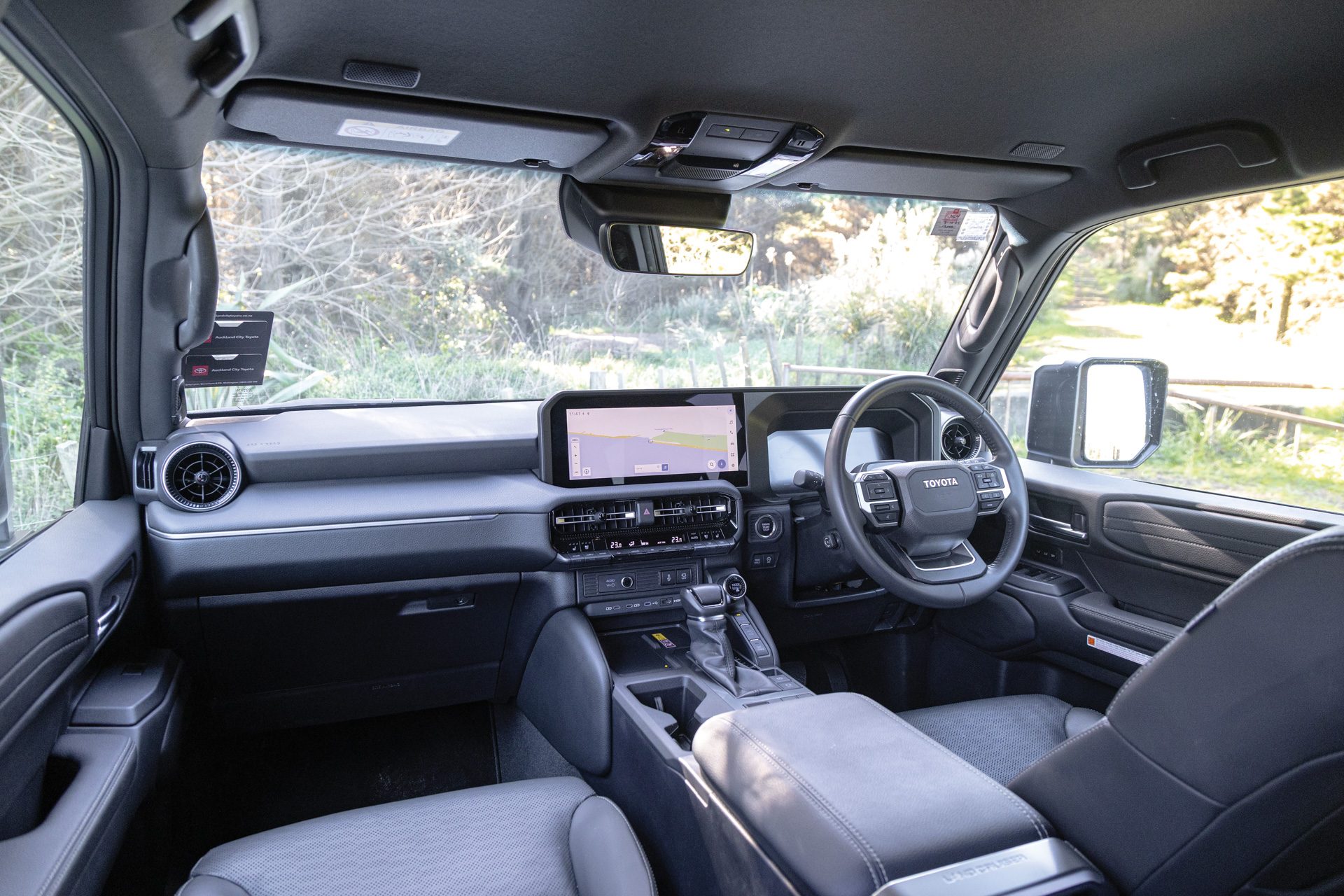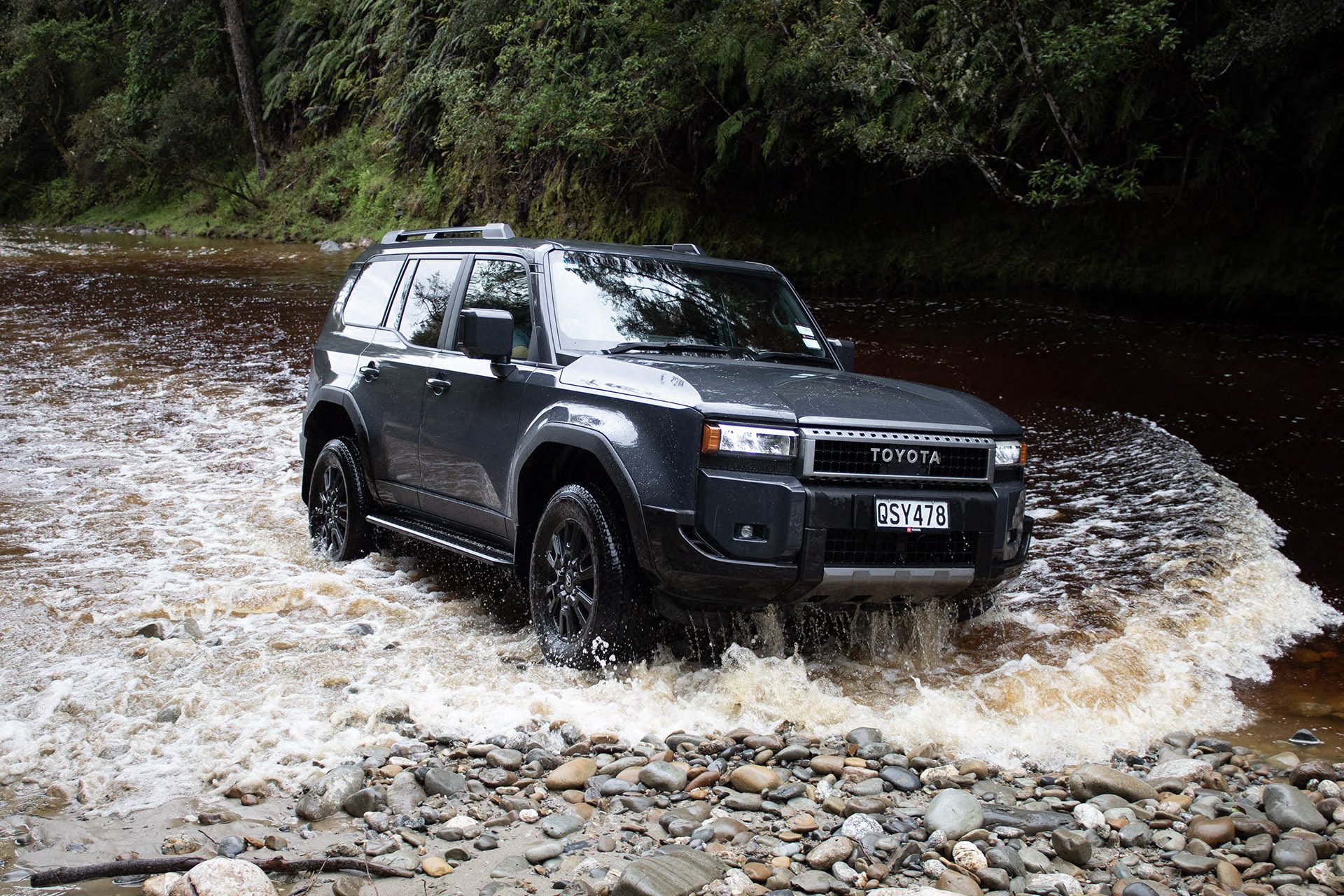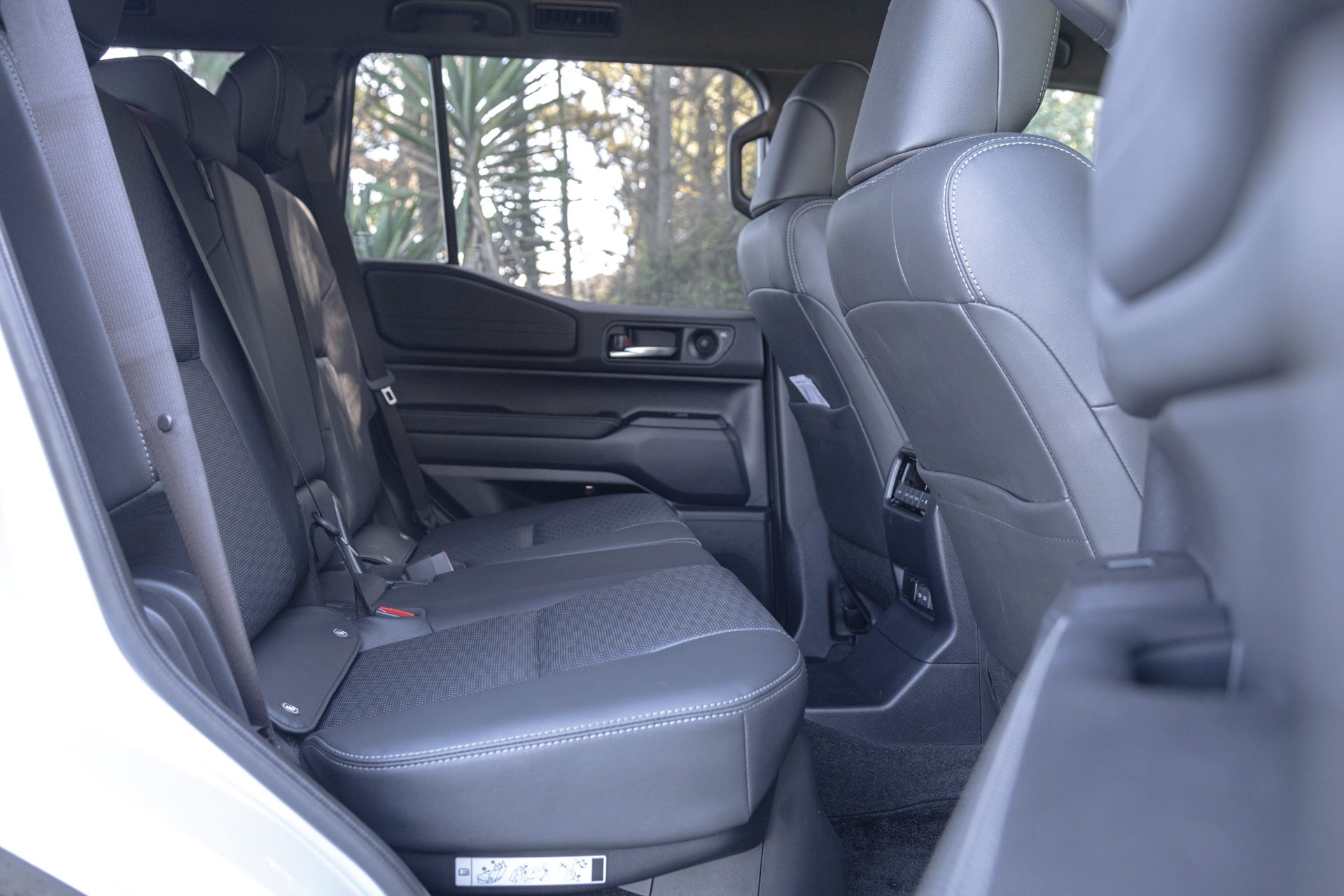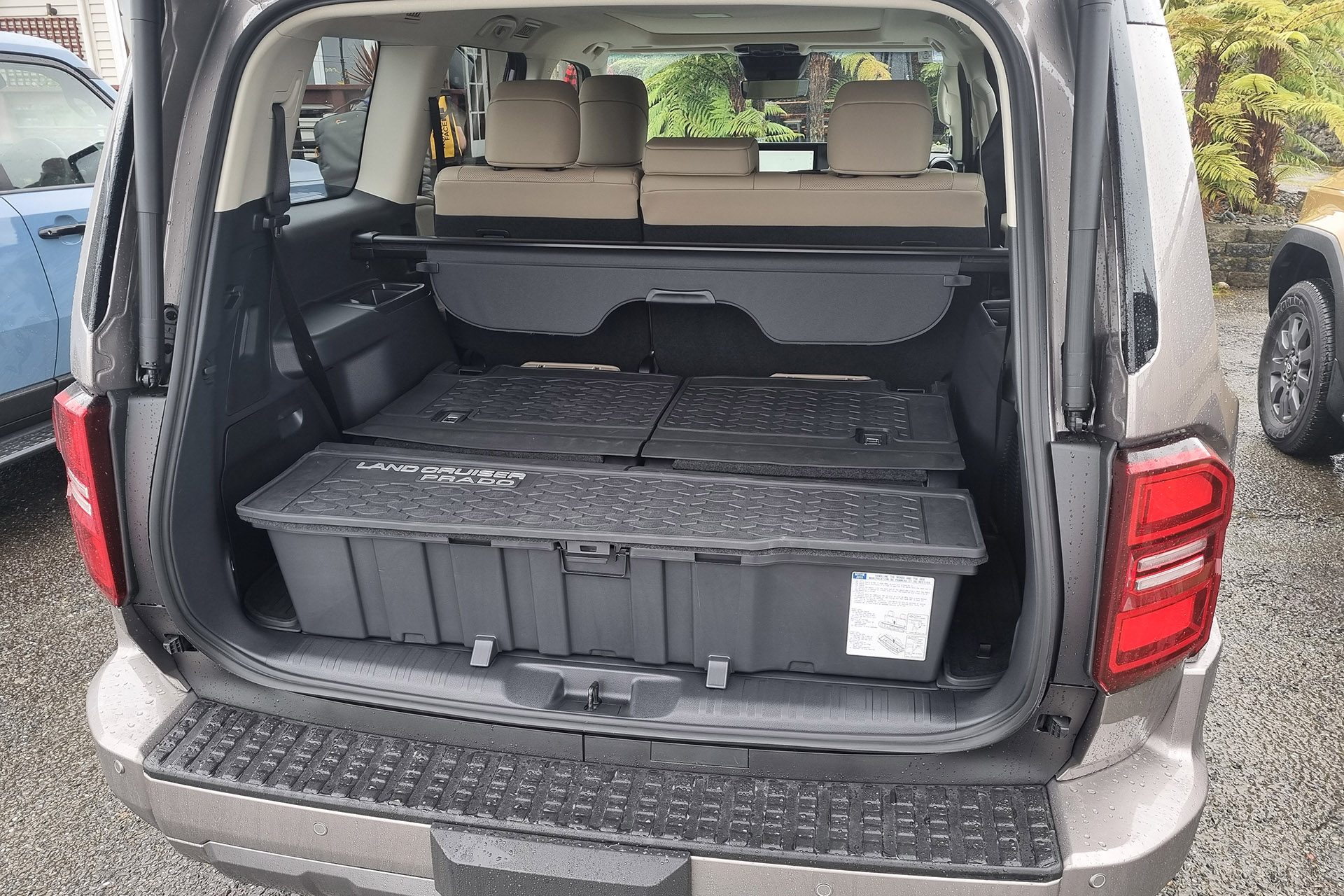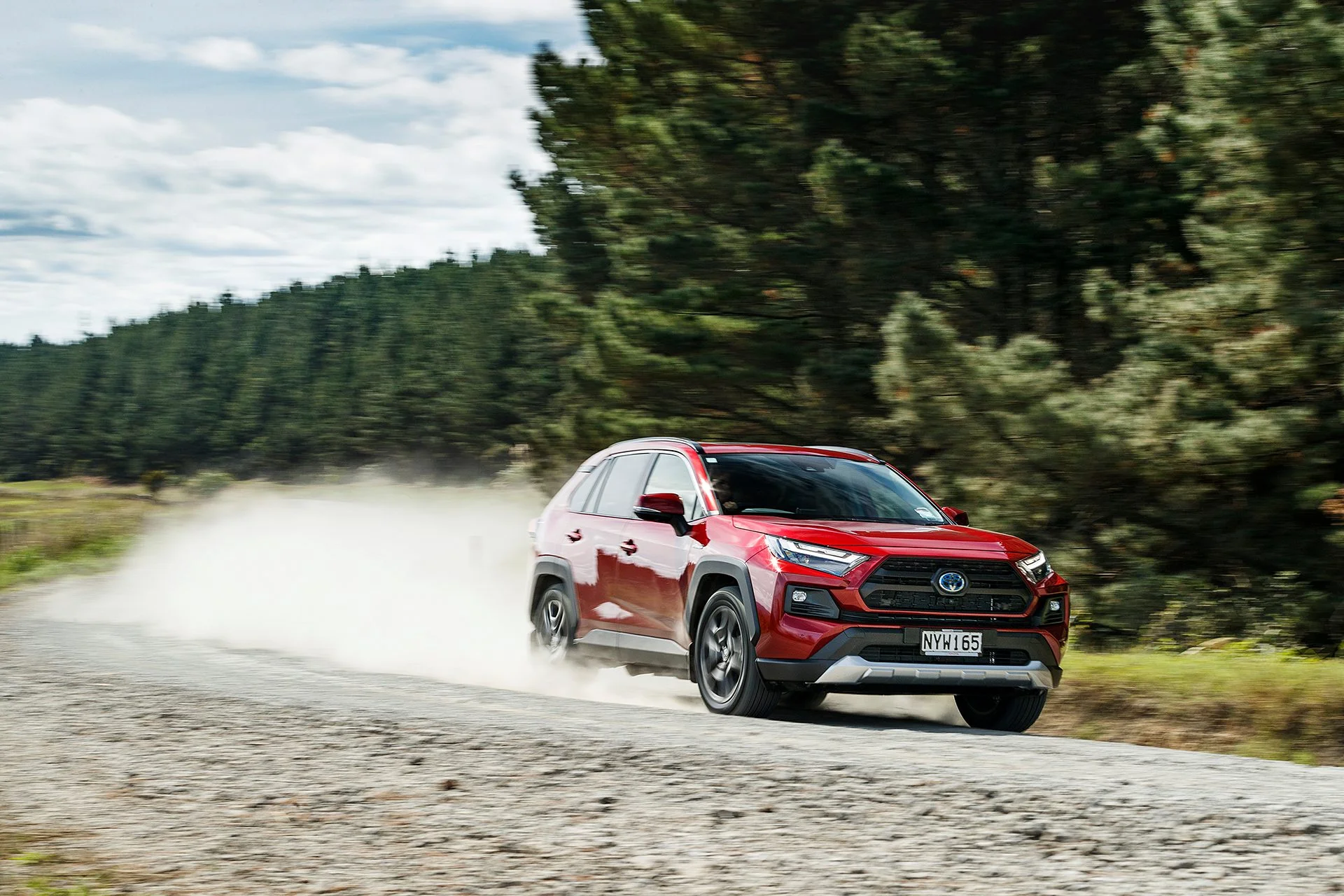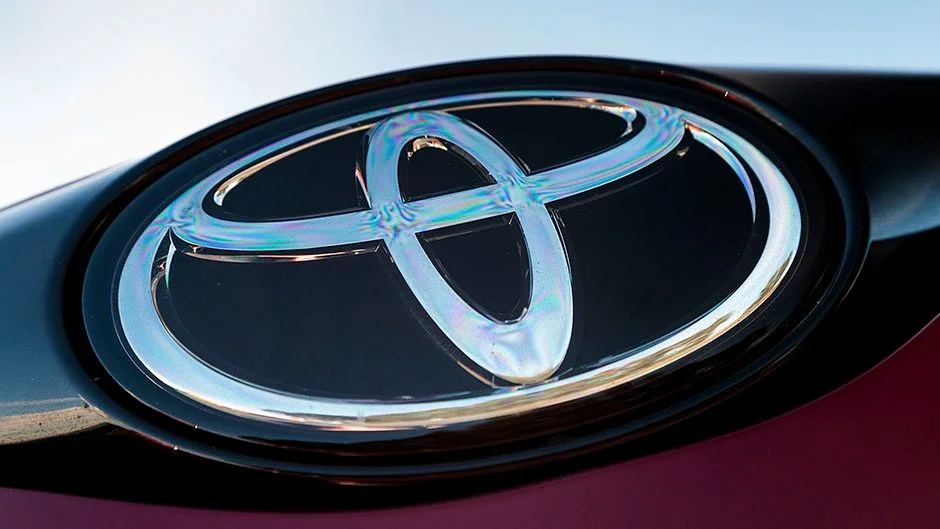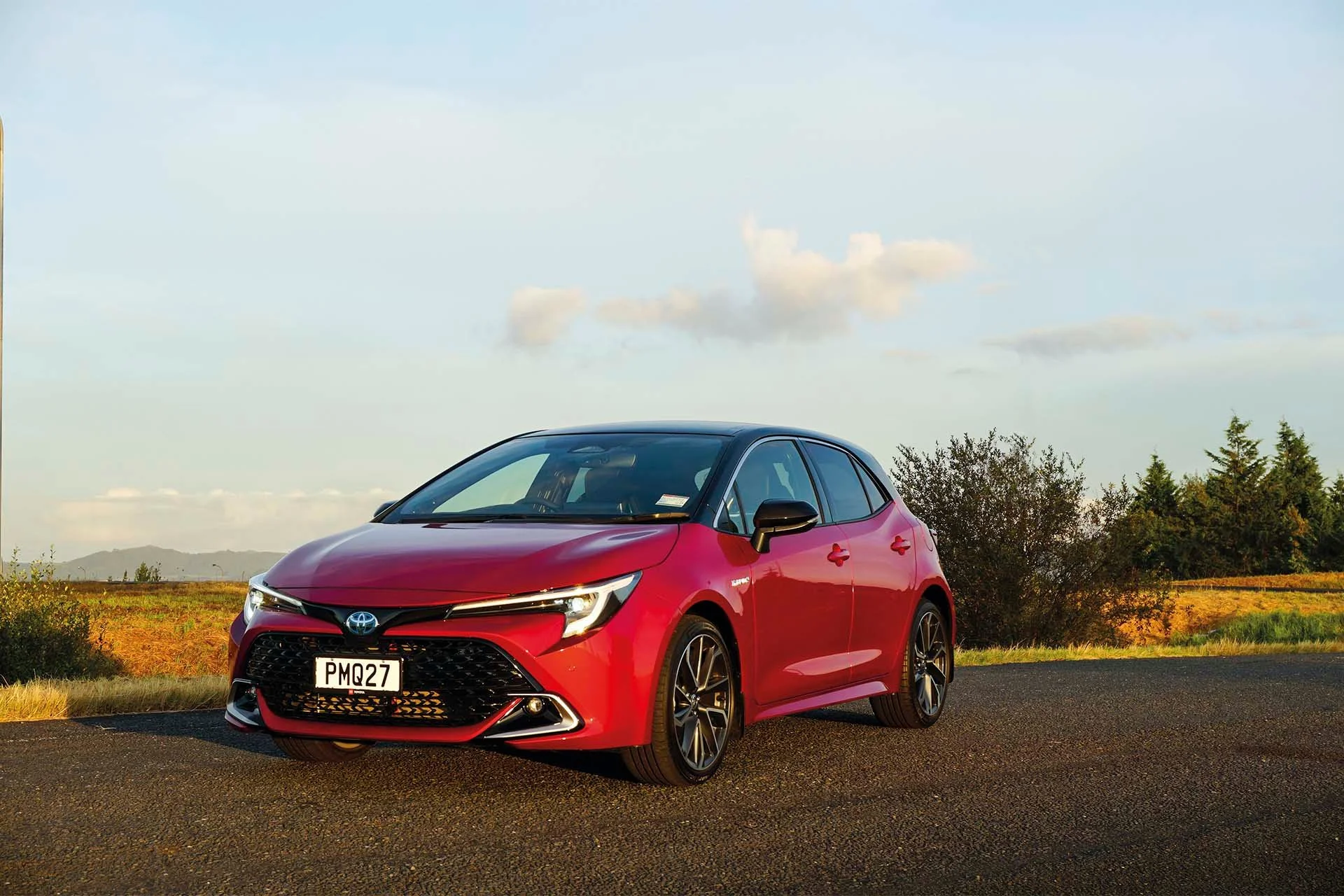Feature article
2024 Toyota Prado Review: Buying Guide
Get a look at the 2024 Toyota Prado. Discover its new design, mild-hybrid diesel engine & enhanced refinement.

After more than two decades, Toyota has finally delivered a truly new Land Cruiser Prado. While the fourth-generation J150 was more of a significant facelift of the earlier J120, the all-new fifth-gen J250 now represents a ground-up rethink.
Fresh Boxy Looks
Toyota describes the new Prado as sporting "chunky retro-cool styling," and that’s not far off. It’s boxy and bold and now significantly bigger; nearly the same size as the larger LC 300. Most people seem to prefer the heritage-inspired grille on the GXL and Adventure trims over the vertical slats of the VX.
However, one popular styling feature, the classical round headlights, is missing in New Zealand. They're only available on the base model, which isn’t sold here. Instead, NZ's Prado range kicks off with the GXL ($83,990), followed by the VX ($93,990), VX Limited ($105,990), and the off-road focused Adventure ($103,990).
More Premium, More Refined
Toyota’s goal with the J250 was to significantly lift refinement levels, and the results show. The cabin now feels genuinely upmarket. Material quality is high and the layout is both practical and premium. The VX model gets thoughtful touches like a cooler box in the centre console, while the VX Limited adds a panoramic sunroof, head-up display and even ventilated rear seats. Safety tech has also taken a big leap.
On a drive from Christchurch to Nelson via Arthur’s Pass and Lake Brunner, the Prado proved serene and well behaved on highways, with vastly improved noise insulation and smoother ride quality than its predecessor.
Under the Bonnet: Mild-Hybrid Diesel
While some markets get a proper hybrid Prado, New Zealand sticks with diesel; specifically, the familiar 1GD 2.8-litre four-cylinder turbo diesel from the Hilux. Power figures remain at 150kW and 500Nm, but a new, smaller turbo improves responsiveness and efficiency. The real news, though, is the addition of a 48V mild-hybrid system.
This system includes a belt-driven generator/starter motor that can contribute 8.4kW and 65Nm at low speeds. It allows smoother and quicker engine restarts and contributes modestly to fuel savings; around 0.9L/hour when stopped, according to Toyota. The hybrid battery (207Wh) is mounted under the rear cargo floor and weighs 7.6kg.
Also new is the AdBlue SCR (Selective Catalytic Reduction) system which helps reduce NOx emissions. Prado uses about 1L of AdBlue per 1000km, more under heavy use. The fuel consumption on open roads hovered in the high 9L/100km range, spiking up to 40L/100km in low-range 4x4 mode during off-road sections.
The new eight-speed AL80 automatic transmission is also a key upgrade. It's smoother, quicker to respond, and broader in its gear ratio spread than the outgoing six-speed, helping make better use of the engine’s outputs.
Chassis: All-New Bones
Gone is the old J150 chassis, the J250 riding on a completely new ladder-frame platform that it shares with the LC 300, Toyota Tacoma, and 4Runner. Toyota claims a 30 per cent increase in torsional rigidity thanks to both the new frame and body structure.
Suspension remains familiar with double wishbones up front and a solid axle with a four-link setup at the rear. However, geometry changes and re-tuned dampers improve road manners. Increased caster enhances straight-line stability, and firmer damping controls roll better in corners. The ride is firmer than before, but noticeably more controlled.
Adaptive Variable Suspension is fitted to VX models. It offers Comfort and Sport S modes, subtly adjusting damping to balance plushness and control. Lower trims run steel springs, but even these offer a decent compromise between comfort and off-road ruggedness.
Another significant improvement is the new electric power steering. Well-weighted and consistent, it brings with it lane keeping assist and other active safety functions without being overly intrusive.
Serious Off-Road Credentials
The Prado remains a bona fide off-roader. Full-time four-wheel drive with a Torsen centre differential is standard, delivering a default 40/60 front/rear torque split, which can be switched to 50/50 when needed. The Adventure model gains a locking rear differential and a decoupling front stabiliser bar for added articulation, improving performance on rough terrain.
Toyota’s off-road aids include low-range gearing, a crawl control system (with adjustable speed settings) and a multi-terrain monitor showing front, side, and wheel-path views via strategically placed cameras. These tools make navigating tight tracks and river crossings easier. During the test drive through the Napoleon Hill trail, the Prado confidently tackled rock-strewn riverbanks and muddy trails with minimal fuss.
Seating and Space: A Mixed Bag
One area where the Prado’s design shows some compromise is in rear cargo space, particularly when the third row of seats is in use. Unlike many rivals, the rear seats fold above the floor, rather than into it. The reason? The hybrid battery resides underneath the cargo area floor, leaving no room for sunken seats.
Access to the third row is easy thanks to tumble-fold second-row seats, but space is tight back there. Legroom is limited and the second row doesn’t slide forward to help, making it a squeeze for adults. Luggage space is also compromised with all seats in place — families needing seven seats will likely also need a roof box or trailer for gear.
There is a five-seat version of the Prado available in both GXL and Adventure trims. These models have more usable cargo space and slightly lower pricing.
Verdict
The new Toyota Land Cruiser Prado is a significant step forward. It blends real-world off-road ability with a vastly more refined on-road driving experience, upgraded tech, and a premium feel that owners will appreciate. While it sticks with diesel and doesn’t offer the full hybrid powertrain here, the mild-hybrid system brings efficiency gains without sacrificing capability.
The third row seating layout is its weakest point, but Toyota is already addressing that with a five-seat variant.
Author
Other articles you might like
